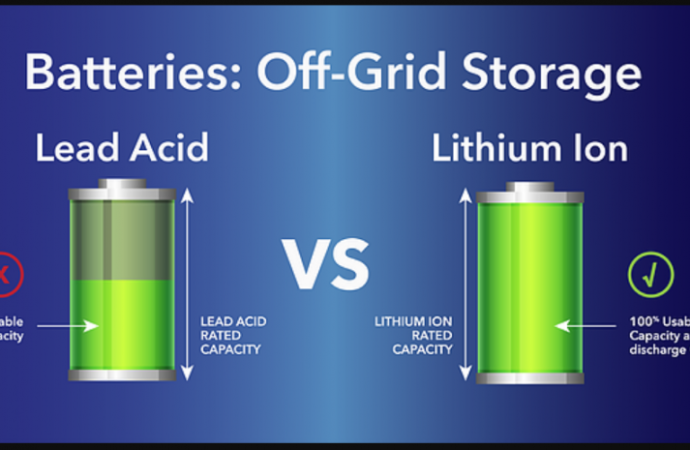Introduction Storing energy has never been more important. From backup power in homes to grid-scale renewable systems, reliable batteries keep the lights on. Two main types dominate today’s market: traditional battery storage (like lead-acid) and lithium-ion battery storage. Each has strengths and weaknesses in cost, lifespan, and performance. Choosing the right technology can save money,
Introduction
Storing energy has never been more important. From backup power in homes to grid-scale renewable systems, reliable batteries keep the lights on. Two main types dominate today’s market: traditional battery storage (like lead-acid) and lithium-ion battery storage. Each has strengths and weaknesses in cost, lifespan, and performance. Choosing the right technology can save money, reduce maintenance, and improve safety. In this article, we compare these two battery types across key factors—energy density, cycle life, cost, maintenance, safety, and environmental impact—so you can decide which battery storage solution is best for your needs.
1. Overview of Battery Storage Technologies
Energy storage systems capture electricity when it’s available and release it when needed. They support:
- Backup Power: During outages at homes or businesses.
- Grid Stabilization: Smoothing renewable energy output for utilities.
- Peak Shaving: Reducing demand charges by discharging at high-use times.
- Off-Grid Power: Enabling remote sites to run on solar or wind.
Two leading battery technologies are:
- Traditional (Lead-Acid): Time-tested, low upfront cost, but heavy and requires maintenance.
- Lithium-Ion: Higher energy density, longer life, lower maintenance, but higher initial price.
2. Traditional Lead-Acid Battery Storage
2.1 How They Work
Lead-acid batteries use lead plates and sulfuric acid. During discharge, lead dioxide and lead react with acid, releasing electrons. Charging reverses the reaction.
2.2 Key Benefits
- Low Initial Cost: Lead-acid batteries cost less per unit of capacity upfront.
- Wide Availability: Used in car starters, uninterruptible power supplies (UPS), and solar systems for decades.
- Mature Technology: Proven reliability with well-understood recycling processes.
2.3 Main Drawbacks
- Low Energy Density: Requires more space and weight for the same capacity as lithium-ion.
- Shorter Cycle Life: Typically 500–1,000 full charge/discharge cycles before capacity drops below 80%.
- High Maintenance: Needs periodic water topping and equalization charges to prevent sulfation.
- Limited Depth of Discharge: To extend life, only 50% of capacity is usable.
3. Lithium-Ion Battery Storage
3.1 How They Work
Lithium-ion batteries store energy by moving lithium ions between a graphite anode and a metal oxide cathode. Charging and discharging are both efficient and reversible.
3.2 Key Benefits
- High Energy Density: Takes up less space and weight for the same capacity, making it ideal for tight installations.
- Long Cycle Life: Often 2,000–5,000 cycles with minimal capacity loss.
- Deep Depth of Discharge: Up to 80–100% usable capacity without harming battery life.
- Low Maintenance: No water topping or equalization; mostly “install and forget.”
- High Efficiency: Round-trip efficiency of 90–95%, meaning less energy lost during charge/discharge.
3.3 Main Drawbacks
- Higher Initial Cost: More expensive per kWh upfront compared to lead-acid.
- Thermal Management Needed: Requires battery management systems (BMS) and sometimes active cooling to prevent overheating.
- Recycling Challenges: Special processes are needed to recover lithium and other materials.
4. Energy Density and Space Requirements
- Lead-Acid: Around 30–50 Wh/kg. Bulky and heavy—suitable when space and weight are not critical.
- Lithium-Ion: Approximately 150–250 Wh/kg. Requires five times less volume and weight for the same energy, ideal for homes, vehicles, and portable systems.
Higher energy density makes lithium-ion the clear winner where space, weight, and design flexibility matter.
5. Cycle Life and Longevity
- Lead-Acid: 500–1,000 cycles at 50% depth of discharge (DoD). Lifespan of about 3–5 years in solar or UPS applications.
- Lithium-Ion: 2,000–5,000 cycles at 80% DoD. Lasts 8–15 years under normal use.
Longer cycle life means lithium-ion batteries provide lower cost per cycle and fewer replacements over system life.
6. Cost Comparison
| Factor | Lead-Acid | Lithium-Ion |
|---|---|---|
| Upfront Cost ($/kWh) | 100–150 | 300–600 |
| Cost per Cycle ($/cycle) | 0.10–0.15 | 0.05–0.10 |
| Lifetime Cost | Higher due to replacements | Lower due to longevity |
Although lithium-ion costs more initially, its lower cost per cycle and longer life often make it more economical over time.
7. Maintenance and Complexity
- Lead-Acid: Requires regular watering, equalization charges, and periodic cleaning to prevent sulfation and grid corrosion.
- Lithium-Ion: Maintenance-free aside from occasional software updates to the BMS. No acid handling or cell balancing by users.
Less maintenance translates to lower operating costs and minimal downtime for lithium-ion systems.
8. Safety and Thermal Management
- Lead-Acid: Emits hydrogen gas during charging—requires ventilation. Spill risk from acid leaks.
- Lithium-Ion: Risk of thermal runaway if cells overheat. Modern systems include BMS, fuses, and cooling to prevent fires.
Both systems need proper installation, but lithium-ion requires more advanced safety controls to manage thermal risks.
9. Environmental Impact and Recycling
- Lead-Acid: One of the most recycled products globally—over 95% of lead and plastic are recovered. However, acid disposal must be managed carefully.
- Lithium-Ion: Recycling infrastructure is growing but less mature. Recovering lithium, cobalt, and nickel is more complex and costly.
While lead-acid has a head start in recycling, lithium-ion recycling capacity is expanding rapidly to meet rising demand.
10. Ideal Use Cases
- Lead-Acid Batteries:
- Off-grid solar systems with limited budgets
- Car starters and automotive backups
- Backup power for small UPS systems
- Lithium-Ion Batteries:
- Home energy storage paired with solar panels
- Electric vehicles and e-bikes
- Grid-scale storage and microgrids
- Portable power stations and marine applications
Choosing the right technology depends on project goals, space, budget, and lifespan requirements.
Conclusion
When comparing traditional battery storage and lithium-ion battery storage, no one-size-fits-all answer emerges. Lead-acid batteries excel in low upfront cost, proven recycling, and simple tech—making them suitable for tight budgets and rough environments. However, their lower energy density, shorter cycle life, and heavy maintenance burden limit their appeal.
Conversely, lithium-ion batteries deliver higher energy density, longer life, deep discharge capacity, and minimal upkeep—ideal for residential solar storage, electric vehicles, and commercial systems. Though they carry a higher initial price and require robust thermal management, their lower cost per cycle and long-term reliability often justify the investment.
Ultimately, the best energy storage solution hinges on your specific needs: space constraints, budget, maintenance capabilities, and sustainability goals. Understanding the strengths and weaknesses of each battery type empowers you to make an informed choice—whether you aim to keep the lights on through a storm or drive an electric car into tomorrow’s cleaner world.
















